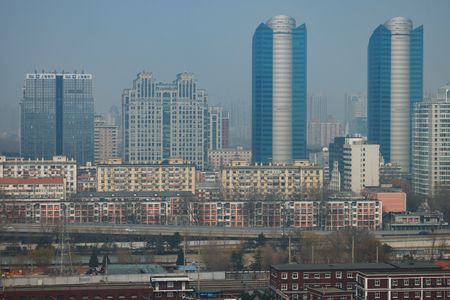By Mei Mei Chu
BEIJING (Reuters) -China’s rising demand for food calls for increased efforts to boost grains production even after record high output in recent years, China’s Central Rural Work Leading Group said on Monday.
“More than 1.4 billion of us want to eat, and we want to eat better and better,” Han Wenxiu, a director from China’s Central Rural Work Leading Group told a news conference.
More people eat meat, eggs and milk in greater volumes, which requires a large-scale increase in grains for feed, Han said.
China is the world largest agriculture producer and importer, bringing in more than 157 million metric tons of grains and soybeans last year, when it also reported record grain production of 706.5 million tons.
In its annual rural work policy blueprint released on Sunday, known as the No. 1 document, the State Council sharpened China’s focus on self-sufficiency and supply stability to counter potential disruptions to agricultural trade with the United States, the European Union and Canada.
Last year’s bumper harvest helped to stabilise prices and relieved consumers’ concerns, Han said.
But he cited “the current complex and severe domestic and international environment,” and said the need to buffer shocks from extreme weather conditions called for increased output.
“The central government’s policy is clear: grain production can only be strengthened, not relaxed. We must not say that grains has passed the test just because of a momentary downturn in prices,” he said.
China has further potential to develop and integrate biotechnology, strengthen equipment support and build a diversified food supply system to ensure food security, he said.
The agriculture ministry aims to increase grain production by 50 million tons by 2030, which would be a 7% increase over 2024’s grain harvest.
(Reporting by Mei Mei Chu and Joe Cash; Editing by Tom Hogue and Barbara Lewis)









